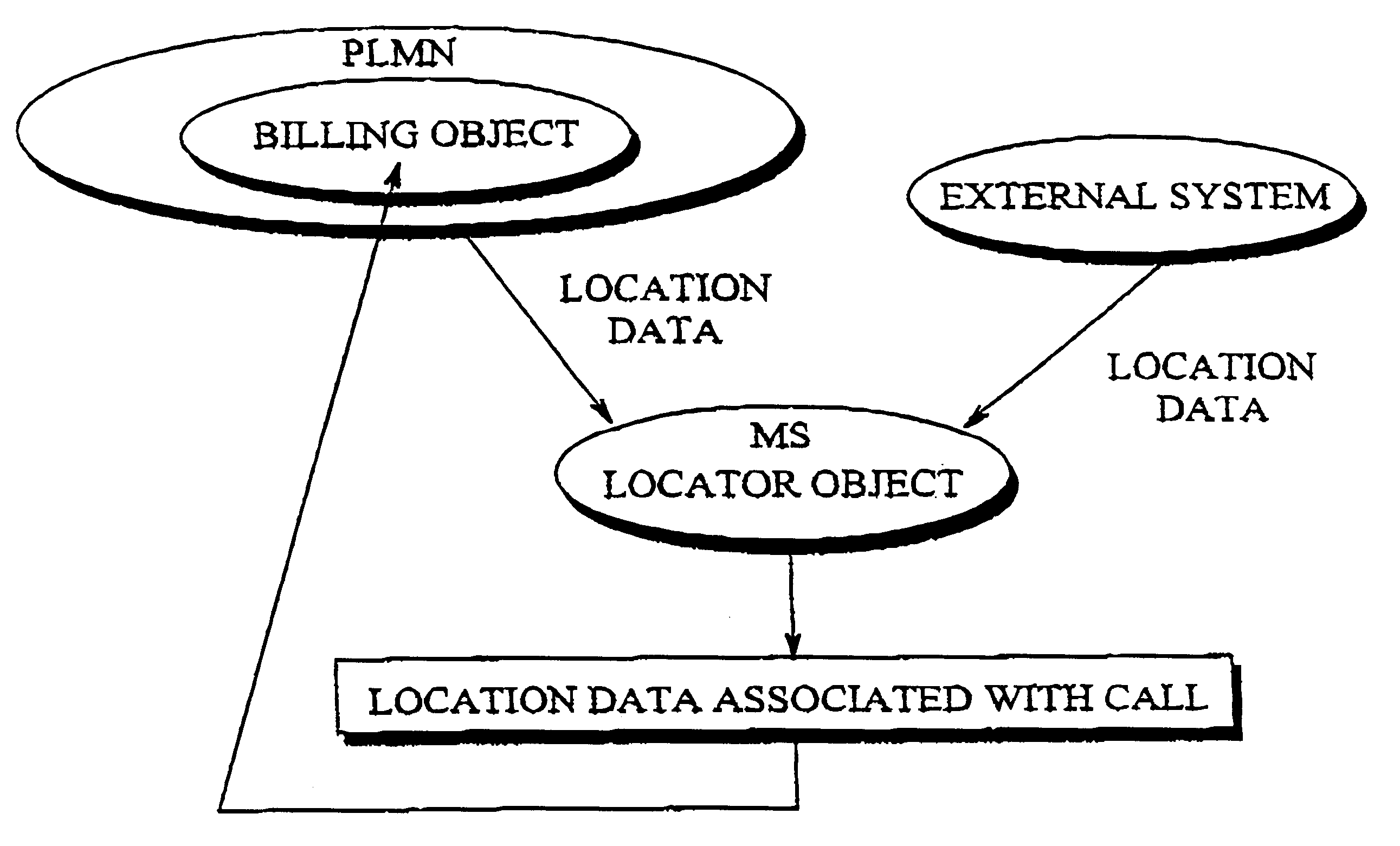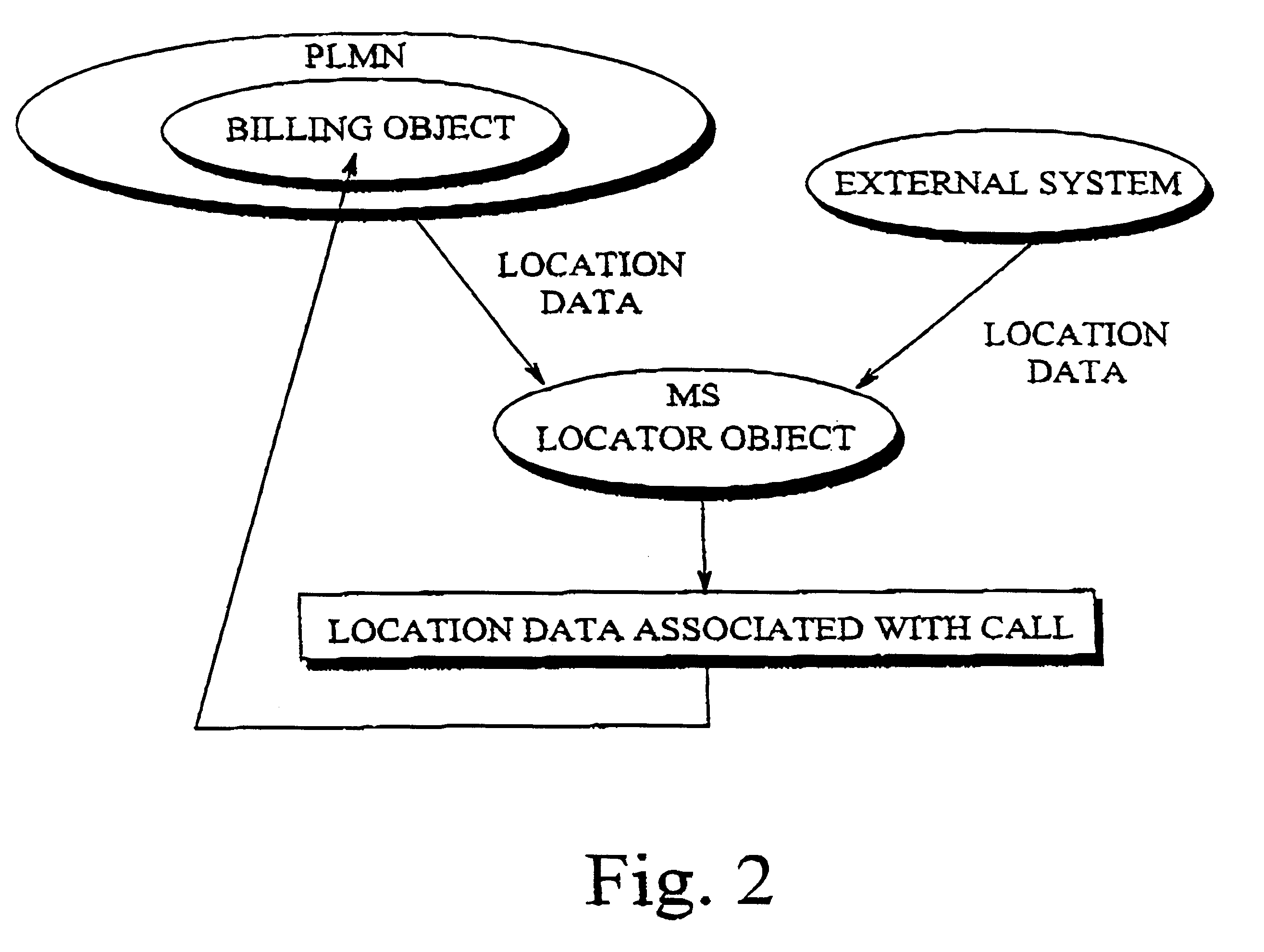Method and apparatus for calculating call charge rates in a mobile telecommunication system
a mobile telecommunications and call charge technology, applied in the field of call charge, can solve the problems that the exact locality of neither the calling subscriber nor the called subscriber is not known, and the rules or principles used in the wired network for calculating the call price cannot be directly applied in the mobile telephone network
- Summary
- Abstract
- Description
- Claims
- Application Information
AI Technical Summary
Problems solved by technology
Method used
Image
Examples
Embodiment Construction
FIG. 2 illustrates, in simplified form, the principle and concept of the present invention. A mobile telephone system PLMN (Public Land Mobile Network) 22 is provided with a billing object. The billing object is located in or at a network element at which call data are collected in a centralized manner for billing purposes; a natural place for the billing element is therefore the billing center, to which the mobile switching centers send their call data records. Installed in the mobile station, i.e. a mobile telephone MS, is a locator object 21 whose function is to establish or determine the current location of the mobile station and to send the location data to the billing object 22.
The locator object receives the information required for the determination of location in two ways--either from the mobile telephone network PLMN or from an external system.
The first method is based on the fact that the base stations in all known mobile telephone networks transmit information about them...
PUM
 Login to View More
Login to View More Abstract
Description
Claims
Application Information
 Login to View More
Login to View More - R&D
- Intellectual Property
- Life Sciences
- Materials
- Tech Scout
- Unparalleled Data Quality
- Higher Quality Content
- 60% Fewer Hallucinations
Browse by: Latest US Patents, China's latest patents, Technical Efficacy Thesaurus, Application Domain, Technology Topic, Popular Technical Reports.
© 2025 PatSnap. All rights reserved.Legal|Privacy policy|Modern Slavery Act Transparency Statement|Sitemap|About US| Contact US: help@patsnap.com



